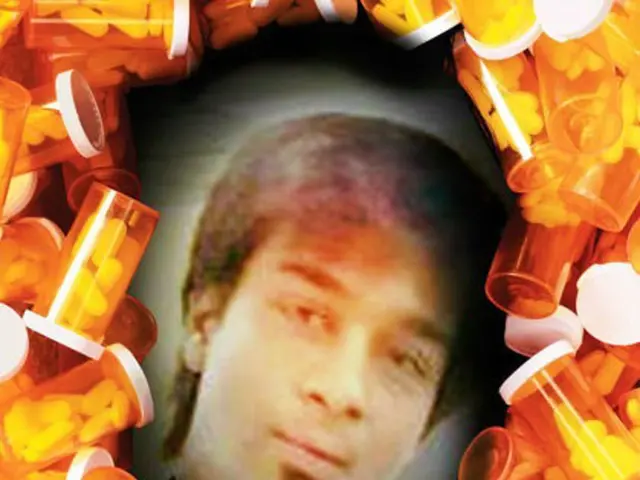Research facility dedicated to mycetoma, a skin disease, obliterated due to Sudanese conflict: center's leader announces devastation.
Rewritten Article
Mycetoma, an infectious disease caused by bacteria or fungi, can wreak havoc on the body, targeting skin, muscle, and even bone. Common symptoms include swollen feet, barnacle-like growths, and club-like hands[1].
Sadly, the Mycetoma Research Centre (MRC) in Khartoum, once a beacon of medical hope in impoverished Sudan, has faced a devastating blow. During the ongoing civil war, the centre's infrastructure, equipment, and irreplaceable biological banks containing over 40 years of patient data and research materials were destroyed[3]. Ahmed Fahal, the centre's director, shared his heartache with AFP, describing the loss as unbearable[3].
The MRC, established under the University of Khartoum in 1991, had treated thousands of patients annually, including those from Sudan and other countries[3]. Today, the centre lies in ruins due to structural damage, with collapsed ceilings, overturned shelves, and documents scattered about[2].
Mycetoma is classified as a neglected tropical disease by the World Health Organization (WHO), with organisms that cause it present in Sudan's neighbors, as well as in tropical and sub-tropical regions around the world, such as Chad, Ethiopia, Mexico, and Thailand[1].
The MRC's destruction poses significant challenges to the ongoing fight against mycetoma[2]. International collaborations, community-based care, and diagnostic advancements will cease, especially in low-resource regions where mycetoma infections are prevalent[1][4].
The road to reconstruction will be long and arduous, requiring substantial international funding, political stability, and time to rebuild trust within affected communities[2][4]. Despite the bleak outlook, the MRC's legacy as the world's only dedicated mycetoma research hub underscores the need for urgent, coordinated efforts to restore its mission[1][3]. Otherwise, the destruction may perpetuate health disparities for mycetoma patients worldwide[2][4].
References:
[1] World Health Organization. (2023). Mycetoma. Retrieved from https://www.who.int/news-room/q-a-detail/mycetoma[2] Drugs for Neglected Diseases initiative. (2023). Three years of mycetoma research cut short by destruction of Sudanese lab. Retrieved from https://www.dndi.org/newsroom/three-years-mycetoma-research-cut-short-destruction-sudanese-lab[3] Associated Press. (2025). Sudan's war destroys medical "success story" for rare tropical disease. Retrieved from https://www.reuters.com/world/africa/sudans-war-destroys-medical-success-story-rare-tropical-disease-2025-05-15/[4] Nyaoke-Anoke, B. (2023). The Impact of the Destruction of the Mycetoma Research Centre: A Multifaceted Crisis. Retrieved from https://dndi.org/sites/default/files/atoms/files/impact_of_the_destruction_of_the_mycetoma_research_centre_multifaceted_crisis_borna_nyaoke-anoke_2023.pdf
- The international community must prioritize the rebuilding of the Mycetoma Research Centre (MRC) in Khartoum, which is crucial for advancing science and medical research related to mycetoma and other health-and-wellness issues, particularly skin conditions, in Africa and beyond.
- The devastating destruction of the MRC in Sudan has led to a significant setback in the fight against mycetoma, an infectious disease prevalent in tropical and sub-tropical regions like Africa, Asia, and Latin America.
- The loss of research materials and patient data at the MRC, which once treated thousands of patients annually, including those from Sudan and other international countries, has been a devastating blow to the global health-and-wellness community, including medical-conditions research focusing on mycetoma and other skin-conditions.
- The ongoing destruction of the MRC during the civil war in Sudan has led to a halt in current research, diagnostics, and treatment advancements for mycetoma, a neglected tropical disease commonly found in Sudan and neighboring countries.
- As the world's only dedicated mycetoma research hub, the MRC was instrumental in treating and documenting cases of mycetoma in Sudan and other African nations, making its reconstruction essential for the ongoing health and wellness of affected populations and for the prevention of future health disparities.
- Paramilitary forces in Sudan are partly responsible for the destruction of the MRC, but the solution lies in international collaboration, political stability, and substantial funding to rebuild not only the centre's infrastructure but also the trust with the affected communities in order to restore the MRC's mission and its invaluable contributions to mycetoma research and health-and-wellness in Africa and beyond.










